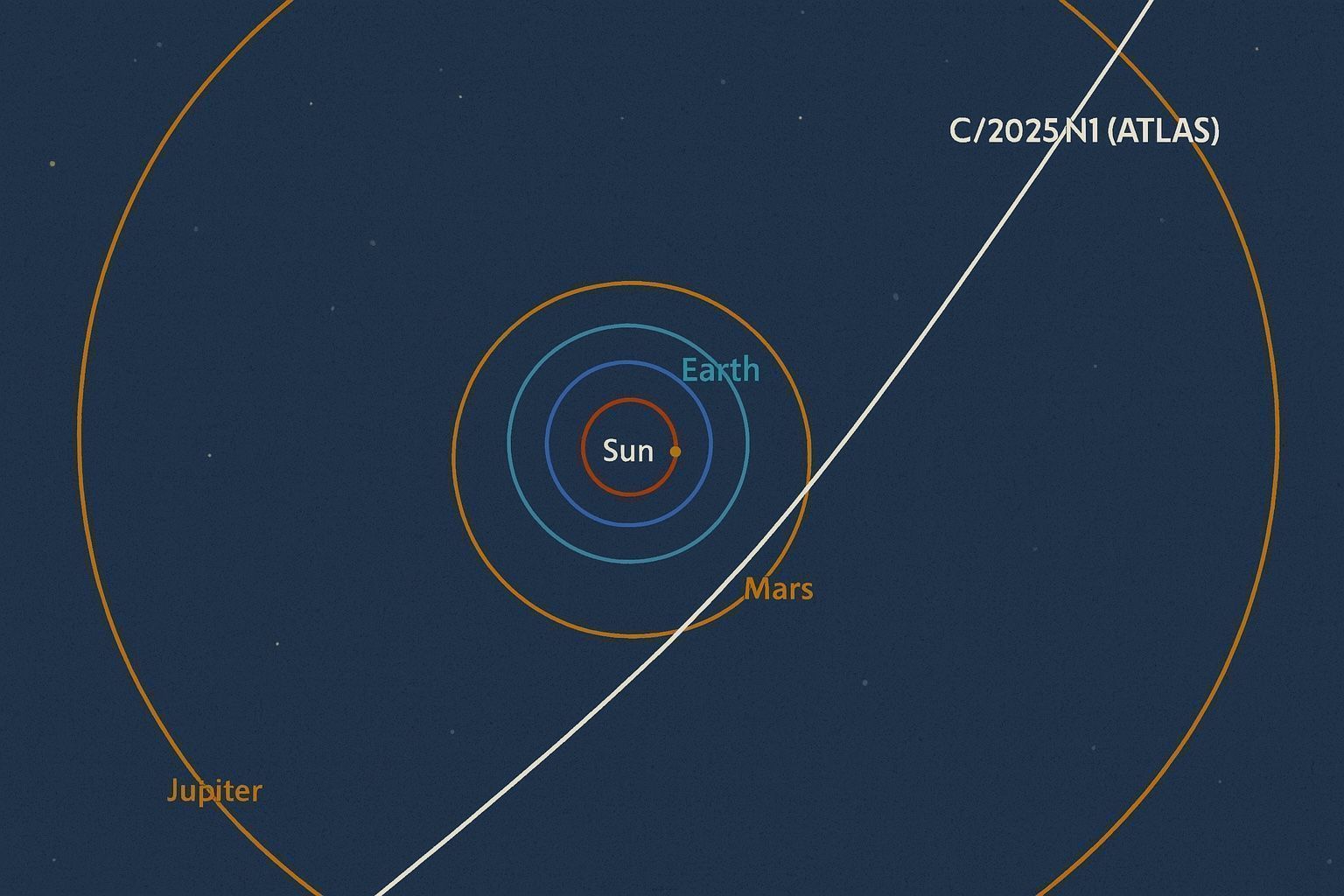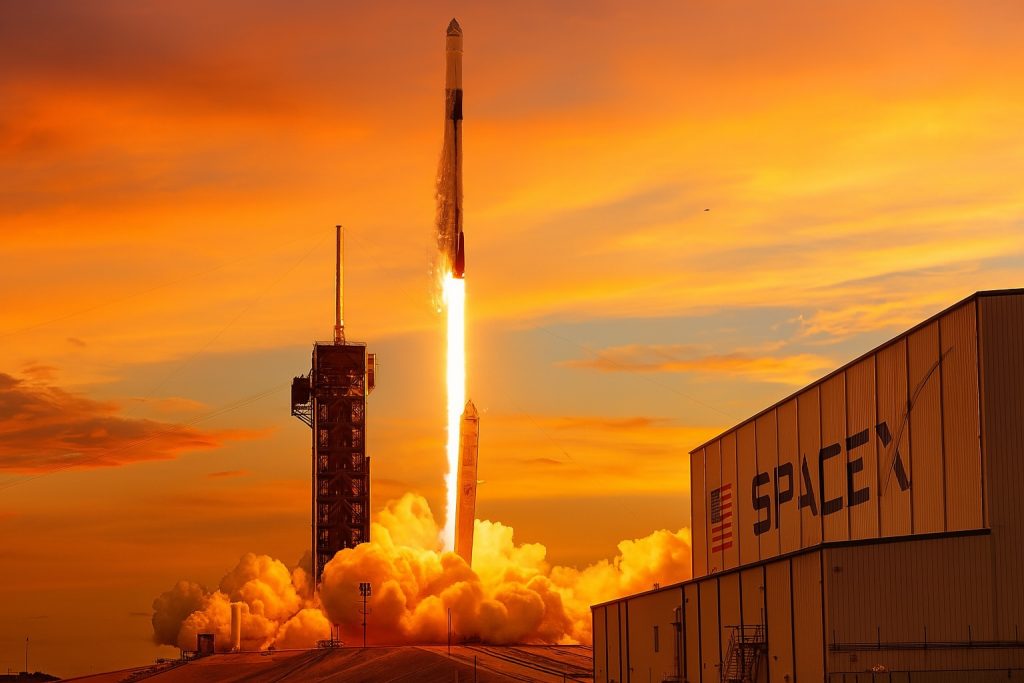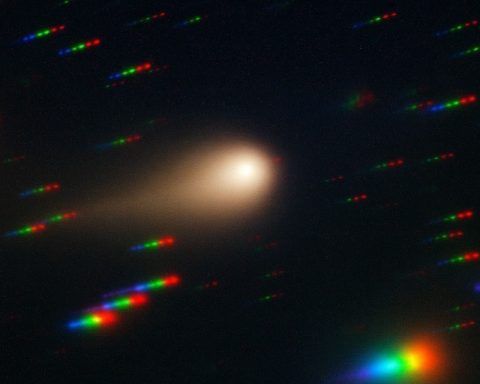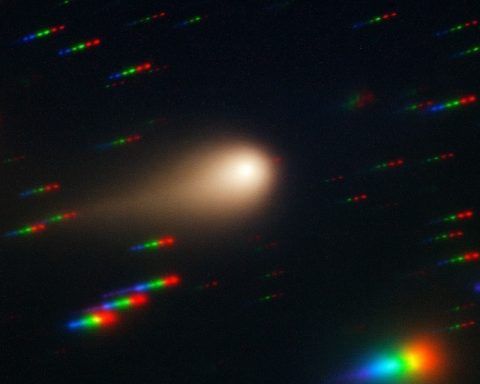- 3I/ATLAS is the third interstellar object ever recorded.
- It was first spotted on July 1, 2025 by the ATLAS survey telescope in Río Hurtado, Chile.
- The designation 3I/ATLAS marks it as the third interstellar object in our solar system.
- Its orbit is hyperbolic with an eccentricity of about 6.2, meaning it is unbound and will exit the solar system.
- A faint coma was observed around 3I/ATLAS within days of discovery, confirming it is a comet.
- The object was traveling over 60 km/s at discovery and about 68 km/s at perihelion.
- Perihelion was predicted for October 29–30, 2025 at roughly 1.4 AU from the Sun, with the Sun-Earth geometry making it nearly behind the Sun.
- Its closest approach to Earth will be around 1.8 AU in December 2025.
- Origin analyses suggest it may come from the Milky Way’s thick disk and be roughly 7 billion years old, potentially the oldest comet seen.
- Nucleus size estimates range from about 0.5–1 km to 20 km, with Rubin Observatory data suggesting no more than about 11 km.
Discovery of 3I/ATLAS: A Visitor From Beyond
Astronomers have confirmed a rare cosmic interloper entering our solar system – a comet from another star. The object, officially designated 3I/ATLAS, was first spotted on July 1, 2025 by the NASA-funded ATLAS survey telescope in Río Hurtado, Chile [1] [2]. (ATLAS stands for Asteroid Terrestrial-impact Last Alert System, a project normally scanning for near-Earth asteroids.) The discovery team, led by Larry Denneau at the University of Hawai‘i, noticed the comet’s highly unusual trajectory, which immediately raised suspicions that it came from interstellar space [3]. Follow-up calculations soon confirmed that the object is unbound by the Sun’s gravity – meaning it is not a long-period Oort Cloud comet, but truly an interstellar visitor. It was promptly given the formal name 3I/ATLAS, where “3I” denotes the third interstellar object ever recorded [4].
“If confirmed, it will be the third known interstellar object from outside our solar system that we have discovered, providing more evidence that such interstellar wanderers are relatively common in our galaxy,” said astronomer Mark Norris [5].
This discovery comes on the heels of two previous extrasolar visitors in recent years. Let’s put 3I/ATLAS in context with its predecessors:
- 1I/ʻOumuamua (2017): The first interstellar object, a tumbling cigar-shaped body about 100–200 meters long, showed no cometary coma or tail. Its nature remains mysterious [6].
- 2I/Borisov (2019): The second interstellar visitor, and the first confirmed interstellar comet. Borisov behaved much like a typical comet – sporting a visible coma and tail – though its nucleus was relatively small (under 1 km in size) [7].
- 3I/ATLAS (2025): The newly found object is also a comet (like Borisov), but early observations suggest it’s far larger and brighter than ʻOumuamua or Borisov [8] [9]. It is streaking through the solar system faster than either of its predecessors and on a trajectory nearly in the same plane as the planets [10].
In fact, 3I/ATLAS has drawn excitement as possibly “the largest and brightest interstellar object yet,” which could help scientists unlock clues about how other star systems form [11]. Its discovery so early in its solar system passage gives astronomers a precious opportunity to study an alien worldlet in detail, something they could only dream of with ʻOumuamua and Borisov.
An Unbound Hyperbolic Trajectory
What convinced scientists that 3I/ATLAS is truly interstellar is its hyperbolic orbit – a one-way ticket through the Sun’s realm. The comet’s path has an orbital eccentricity of about 6.2, far above 1, which means it is not gravitationally bound to the Sun and will escape back into interstellar space [12]. (For comparison, ʻOumuamua’s eccentricity was ~1.2 and Borisov’s ~3.6 [13].) In other words, 3I/ATLAS is zooming in on a hyperbolic trajectory, visiting our neighborhood just this once before continuing on its endless journey through the galaxy [14].
The comet entered from the direction of the constellation Sagittarius, in the general plane of the Milky Way [15]. Its orbital inclination is only about 5° relative to the ecliptic (the plane of our solar system), meaning 3I/ATLAS’s path lies nearly along the solar system’s disk. Uniquely, however, it is moving on a retrograde course – essentially going “against the traffic” of the planets. This low-inclination, opposite-direction approach is quite unlike the steeply tilted or random angles of the previous interstellar visitors, making 3I/ATLAS’s trajectory especially intriguing [16].
Crucially, 3I/ATLAS is fast. It was already traveling over 60 km/s (roughly 134,000 mph) relative to the Sun when discovered [17], and will reach about 68 km/s at perihelion. Such high speed is consistent with an object arriving from outside the Sun’s gravitational grip. It also means the comet will spend only a few months in the inner solar system.
Orbital predictions: According to NASA and ESA calculations, Comet 3I/ATLAS will reach its closest point to the Sun (perihelion) around October 29–30, 2025, at about 1.4 AU from the Sun – just inside the orbit of Mars [18] [19]. At perihelion it will be almost directly behind the Sun as seen from Earth, which unfortunately will obscure it from Earth-based view during that critical period [20]. The comet poses no threat to Earth, never coming closer than roughly 1.6–1.8 AU (about 240–270 million km). Its nearest pass to Earth will be in December 2025 at about 1.8 AU away, and even its closest approaches to other planets (0.36 AU from Jupiter, 0.7 AU from Venus, 1.5 AU from Mars) are comfortably distant [21]. In short, 3I/ATLAS is just passing through – albeit at a distance and speed that preclude any danger of collision [22].
After perihelion, as the comet recedes from the Sun, it is expected to re-emerge from the Sun’s glare by early December 2025, once again observable by telescopes [23] [24]. It will then be outbound, on its way toward the stars from which it came.
How Was It Detected? Instruments and Techniques
ATLAS Discovery: The comet’s initial detection on July 1, 2025 came from ATLAS’s Deep Random Survey telescope in Chile [25]. ATLAS is an automated sky survey designed to catch moving objects (primarily to spot hazardous asteroids). The system flagged a faint magnitude ~18 object with an odd motion against background stars [26]. Originally logged under a temporary identifier “A11pl3Z,” the object’s unusual speed and trajectory were immediately noted [27]. Within days, astronomers performed follow-up observations and also dug up “precovery” images from other telescopes. Data from three ATLAS telescopes and the Zwicky Transient Facility (ZTF) revealed the object had been captured in images as far back as mid-June 2025 (and even as early as late May, according to subsequent analysis) [28] [29]. This early detection and retroactive data extended the observed arc, firming up the orbit enough to declare with confidence that it was hyperbolic and interstellar [30].
Once word got out, a global observing campaign sprang into action. Professional and advanced amateur astronomers around the world began tracking 3I/ATLAS with telescopes large and small. ESA’s Planetary Defence Office was alerted by automated systems and quickly joined the effort, tasking telescopes in Hawaii, Chile, and Australia to monitor the interstellar interloper [31]. These included some ESA-partner facilities as well as others in their network of observatories [32]. The goal was not only to track the comet’s position, but also to search archived images for earlier sightings (precovery) and to start characterizing its physical properties.
Major telescopes turn toward 3I: Within weeks of discovery, some of the world’s most powerful observatories had gathered light from 3I/ATLAS. The brand-new 8.4-meter Vera C. Rubin Observatory (currently in commissioning) realized it had serendipitously imaged the comet in late June, before the discovery was announced [33]. The Rubin team pulled over 100 images from their data, which helped confirm a faint fuzzy coma around the object [34]. Other big guns like the Very Large Telescope (VLT) in Chile and the Gemini South telescope also targeted the comet early on [35]. By mid to late July, even space telescopes joined in – NASA’s Hubble Space Telescope captured images of 3I/ATLAS on July 21, 2025, showing a “nice and puffy” coma in Hubble’s high-resolution view [36]. The James Webb Space Telescope (JWST) was scheduled to observe the comet in the ensuing weeks as well [37], aiming to use its sensitive infrared instruments to probe the comet’s composition.
Astronomers were thrilled at the chance to observe an interstellar comet with such a suite of instruments from the get-go. “It was discovered a few days ago and has been observed only with small telescopes… We are scrambling to get the big guys on it as soon as possible,” said Olivier Hainaut, an astronomer at the European Southern Observatory, in mid-July [38] [39]. Indeed, as soon as the bright Moon had left the sky in late July, larger observatories ramped up intensive observations of 3I/ATLAS [40]. This concerted, rapid response is in stark contrast to ʻOumuamua (found after it was already leaving) and even Borisov (discovered closer to perihelion). With 3I/ATLAS, astronomers hope to collect continuous coverage of its behavior throughout its solar system journey [41].
Visibility and Viewing Prospects
Many skywatchers are wondering if they can see this interstellar comet. For the general public, 3I/ATLAS will not be a spectacle in the sky, unfortunately. When discovered in early July, it glimmered at roughly magnitude +18 to +19 in the constellation Sagittarius – about 2.5 million times fainter than the faintest star visible to the naked eye [42]. Such dimness puts it out of reach of casual observers. Even experienced amateurs would need a large telescope (16-inch/40 cm or bigger) and sensitive cameras to capture it in images [43]. “It will not be visible to the naked eye, and I think it will be a challenge for an amateur,” noted Prof. Martin Barstow of the University of Leicester [44]. Indeed, only a handful of skilled astrophotographers with serious equipment have managed to photograph 3I/ATLAS so far – for example, using 20–30 cm telescopes and long exposures to record it as a tiny smudge against the starry background [45].
The good news is that 3I/ATLAS should brighten in the coming months. As it approaches the Sun, more of its ice will sublimate and release dust, making the comet optically brighter. By the time the comet reaches its closest approach to Earth in December 2025 (about 270 million km away), it could brighten to around magnitude +11, according to forecasts [46]. “By the time it makes its closest approach, it will be a relatively easy target for amateur astronomers to observe,” said Mark Norris, suggesting that small backyard telescopes might then pick it up [47]. A magnitude ~11 comet is still too faint for naked-eye viewing, but within reach of common amateur scopes under dark skies.
However, timing is tricky: during the comet’s perihelion in late October 2025 – when it’s nearest the Sun and potentially most active – it will lie almost directly behind the Sun from Earth’s perspective [48]. This means no Earth-based telescope (or even Hubble or JWST) can safely observe it during that period due to the Sun’s blinding glare [49]. So there will be a gap in observations just when the comet is whipping around the Sun. Astronomers hope to pick it back up in early December as it emerges on the other side of the Sun [50] [51]. At that point, the comet will be outbound but still relatively near (and possibly at its brightest). December 2025 could offer a window for further observations, weather and sunlight permitting, before 3I/ATLAS fades away into the depths of space.
Physical Characteristics: Size, Tail, and Composition
A Fuzzy Comet: Unlike ʻOumuamua, which appeared star-like and had no detectable coma, 3I/ATLAS has behaved like a normal comet. Within days of discovery, observers reported a faint “coma” – a diffuse cloud of gas and dust – surrounding the nucleus. Bryce Bolin (Eureka Scientific), lead author of one of the first research papers on 3I/ATLAS, used the Palomar Observatory and other telescopes to measure the coma’s extent. “We were able to determine that the comet had a coma about two or three arcseconds wide,” Bolin says [52]. At the comet’s distance, that angular size corresponds to a halo tens of thousands of kilometers across, indicating significant outgassing. Initial skepticism by some (who wondered if the fuzziness was just motion-blur) was dispelled by Rubin Observatory images: a team led by Colin Chandler found the coma real and even saw it grow slightly over a two-week span, confirming sustained activity [53]. These early observations firmly establish 3I/ATLAS as an active comet spewing gas and dust.
Size of the nucleus: How big is the solid body at the heart of this comet? The true nucleus size is hard to pin down at the moment, because the object is shrouded in its coma. Estimates have varied, but all agree 3I/ATLAS is at least several times larger than Borisov or ʻOumuamua. The Rubin Observatory team’s analysis of the brightness suggests a nucleus no more than about 11 km (7 miles) in diameter [54]. Bolin’s group, however, suspects it could be much smaller – on the order of ~0.5 to 1 km – once you account for the comet’s activity making it look brighter [55]. Bolin notes that a smaller size fits predictions by Harvard astronomer Avi Loeb, who argued that if 3I/ATLAS were as large as ~10 km, there ought to be many more smaller interstellar comets that we would have detected by now [56]. On the other hand, some early interpretations of the comet’s brightness allowed for a very large size. European Southern Observatory scientist Olivier Hainaut estimated, with “huge uncertainty,” that “3I/ATLAS is much larger than the other two – about 15 kilometers in diameter, compared to ~100 meters for 1I/ʻOumuamua and <1 km for 2I/Borisov.” He noted it “may even be as wide as 20 km” based on preliminary data, though this could change with more observations [57]. Similarly, an ESA report stated the comet “is thought to be up to 20 kilometers wide” [58]. Clearly, there is a wide range of possibilities, and only further study (for example, high-resolution imaging or detailed brightness modeling) will narrow down the true size. Many scientists currently lean toward the lower end (a kilometer or two), but even that makes 3I/ATLAS a sizable object by comet standards. For context, a 1–5 km nucleus would be comparable to typical long-period comets; if it truly were 15+ km, it’d rank among the bigger comets known. Either way, 3I/ATLAS appears to be the biggest interstellar visitor yet observed [59].
Brightness and appearance: At discovery, 3I/ATLAS was around magnitude 18 and described as a dim, diffuse smudge. As it nears the Sun, the comet will brighten (perhaps to mag ~11 by year’s end, as noted) and develop a more prominent tail. Already, several observers have detected a faint tail associated with the comet [60] [61]. Interestingly, reports indicate the tail’s orientation is odd: instead of streaming directly away from the Sun (as comet tails usually do due to solar radiation pressure), part of 3I/ATLAS’s tail seems to point toward the Sun. This counterintuitive “sunward tail” has raised eyebrows. Dr. Bolin offers a possible explanation: “Massive particles are being ejected in the solar direction, and they’re too heavy to be blown by the solar radiation at the distance the comet is from the Sun, so they’re continuing to go forward a little bit toward the Sun,” he suggests [62]. In essence, the comet might be shooting out big grains or pebble-sized debris from its nucleus; these heavier particles won’t be as affected by sunlight, so they linger along the comet’s orbital path, creating a tail that trails into the direction of travel (which, at this stage, is roughly toward the Sun). As the comet draws closer in, we can expect a more typical sunward-facing coma and antisunward tail to develop as well, especially if lighter dust and gas start streaming off in larger quantities [63] [64]. By perihelion, 3I/ATLAS could sport a classic cometary appearance with a glowing head and a substantial tail – albeit hidden behind the Sun from our view.
What is it made of? Being an interstellar comet, one might wonder if 3I/ATLAS has exotic ingredients. So far, however, it appears broadly similar to comets from our own solar system. Spectral measurements and color indices taken in July hint at a composition including water ice and silicate dust, common in normal comets [65]. In fact, 3I/ATLAS seems to be “water-rich,” which matches the theory about its origin (more on that shortly) [66]. Scientists have not yet definitively detected more volatile gases like carbon monoxide (CO) or carbon dioxide (CO₂) from this comet, but these ices are likely present and could sublimate as it gets closer to the Sun [67]. Future observations with powerful instruments – for example, JWST’s infrared spectrometers – are planned to search for those chemical signatures [68]. Such data will reveal the chemical fingerprints of the material this comet carries from its home star system. “They undoubtedly carry chemical signatures from outside the solar system, so gaining observations tells us a lot about the possibility of material traveling between planetary systems,” notes Prof. Barstow [69]. Each measurement of water, organics, or other compounds in 3I/ATLAS can be directly compared to what we see in comets born around our Sun, providing clues about similarities or differences in the cosmic recipe of planets and comets across the galaxy. Who knows – these interstellar messengers might even carry organic molecules or other hints of the environments in which they formed, offering a tantalizing glimpse into alien solar systems.
Origin and Age – A Relic of Another World
Where did 3I/ATLAS come from? While we can’t trace it to a specific star, its incoming trajectory offers some hints. A recent analysis by Matthew Hopkins (University of Oxford) and colleagues examined the object’s path through the galaxy. Their calculations suggest 3I/ATLAS may hail from the Milky Way’s thick disk [70]. The thick disk is a population of older stars that surround the galaxy’s thin disk (where our Sun resides). If this is true, it implies 3I/ATLAS could be extremely ancient – possibly on the order of 7 billion years old, meaning it formed long before our solar system even existed [71]. In fact, astronomers have already quipped that this newcomer is “very likely to be the oldest comet we have ever seen”, given that it might originate from a primordial star system that has since evolved over eons [72].
Being so old, 3I/ATLAS would have had a long, eventful journey. It likely formed around a star in that thick disk in the distant past, possibly in a cold outer region where ices could condense. At some point, a gravitational encounter – maybe with a giant planet or a passing star – ejected the comet from its original solar system into interstellar space [73]. It then wandered the galaxy for untold ages until fate sent it our way. If it indeed comes from a low-metallicity (older) star system, one prediction is that its ices should be more dominated by plain water (H₂O) ice, since very ancient stars had fewer heavy elements to create exotic ices. This matches the tentative observation that 3I/ATLAS seems water-rich [74]. As it nears the Sun, astronomers will watch closely for outgassing of CO₂ or CO – detecting those (or not detecting them) can also inform theories about the comet’s place of origin [75].
Regardless of the exact source, 3I/ATLAS is a messenger from a far-off star, a piece of a planet-forming disk that was cast into the void. “What makes interstellar objects like 3I/ATLAS so extraordinary is their absolutely foreign nature,” an ESA release emphasized. While everything else in our solar system shares a common origin, these visitors are true outsiders – remnants of other planetary systems, carrying clues about worlds far beyond our own [76]. In essence, 3I/ATLAS is a chunk of another solar system’s history, now dropping by to tell its story.
Astronomers’ Reactions and Rapid Research
The astronomical community is abuzz over 3I/ATLAS. Many telescopes, research teams, and even space missions are gearing up to study it. Just weeks after discovery, scientific papers are already being written and shared. Bolin et al. and Chandler et al. have posted some of the first reports on arXiv (the scientific preprint server), detailing the comet’s observed properties such as its coma size, brightness, and initial size constraints [77] [78]. These rapid publications allow the global community to coordinate and refine their observing plans – a crucial step when you have only a short time window to study a one-time visitor.
Astronomers are particularly eager not to “miss anything” this time around. Both ʻOumuamua and Borisov left researchers with regrets: ʻOumuamua was spotted so late that no large telescopes could probe it in detail, and Borisov, though observed near perihelion, still had only limited data on its behavior and breakup (Borisov shed a fragment during perihelion) [79]. With 3I/ATLAS, there’s a chance to get continuous coverage of its evolution – from inbound approach, through solar heating, to outbound journey [80]. “One way or another, it would be useful to have observational coverage of the comet’s entire journey through the solar system,” notes Marshall Eubanks of Space Initiatives Inc., who has been advocating for maximizing observations of 3I/ATLAS [81]. Eubanks and others are encouraging creative ways to keep eyes on the comet even when Earth-based observatories can’t. For instance, interplanetary spacecraft might be enlisted to watch 3I/ATLAS during its Sun-constrained period. Eubanks identified ESA’s Jupiter Icy Moons Explorer (JUICE) and NASA’s Psyche probe as two missions that could potentially turn their cameras toward the comet around perihelion [82] [83]. “JUICE will have a wonderful view of 3I from less than a third of an AU away,” Eubanks says, since that spacecraft will be located in a part of the solar system with a good viewing angle [84]. However, he acknowledges that repurposing big missions on the fly is challenging – any such observations would have to be weighed against mission priorities and safety, and no official decision has been made yet [85] [86]. Still, the fact that scientists are even considering using spacecraft at Mars or en route to Jupiter to catch a glimpse of a comet shows how special this event is.
Researchers also hope to catch any dramatic activity from 3I/ATLAS. Comets often behave unpredictably – they can flare up, break apart, or even disintegrate. Borisov, for example, likely fragmented near the Sun. “Such fragmentation around perihelion is not uncommon among comets,” notes Sky & Telescope, and 3I/ATLAS will be watched for similar behavior [87]. Having eyes on the comet throughout would allow scientists to witness any breakup in real time. “It would be very nice to be able to observe that in real time, as opposed to just trying to guess what happened afterwards,” Eubanks points out, referring to catching any potential fragmentation event as it occurs [88]. With a combination of ground and space-based assets, astronomers are aiming to do exactly that.
Meanwhile, excitement about 3I/ATLAS extends beyond this single comet. Its detection is proof that our improved surveys are finally catching more of these interstellar nomads. “Clearly, we are getting better at finding them,” says Olivier Hainaut, crediting new telescopes and automated sky scans for the spike in discoveries [89]. Indeed, the Vera Rubin Observatory’s upcoming Legacy Survey of Space and Time (LSST) is expected to revolutionize the search for transient objects. LSST will systematically scan the entire sky at unprecedented depth for a decade, which could uncover dozens more interstellar objects in the coming years [90]. One 2020 study estimated that roughly 7 interstellar objects per year might pass within 1 AU of the Sun on average – we just never noticed most of them [91]. With LSST, that could change. “It will be a dramatic improvement. Get ready for 4I, 5I … 42I!” Hainaut said, only half in jest [92] [93]. In other words, the discovery of 3I/ATLAS might mark the beginning of a new era where interstellar visitors are found frequently, allowing scientists to build a larger sample and begin answering deeper questions about how common such objects are and what they’re made of.
The Quest to Intercept an Interstellar Comet
Whenever an interstellar object is found, the inevitable question arises: can we send a spacecraft to chase it? In principle, catching up to something like 3I/ATLAS is extremely difficult – it’s moving very fast and was only noticed on relatively short notice. “Probably not, it’s just too fast,” said Prof. Martin Barstow regarding any mission to intercept 3I/ATLAS [94]. He explained that to do so, “we would need a spacecraft ready in space, fully checked out and with a rendezvous capability” at the moment the object is discovered [95]. Essentially, one would need a probe pre-positioned and waiting, because launching a new rocket after discovery would be far too slow to catch a speeding comet already inbound.
Interestingly, space agencies have been mulling exactly that idea. The European Space Agency is preparing a mission called Comet Interceptor, planned for launch in 2029 [96]. This innovative probe will wait at the Sun–Earth L2 point (a gravitational parking spot) for years, until an interesting comet comes along [97]. The mission’s baseline target is likely a first-time Oort Cloud comet, but if luck has it, an interstellar object could be chosen should one appear within reach. Comet Interceptor will carry sub-spacecraft that can be deployed to fly close to a comet and sample its environment. The catch, as Dr. Barstow notes, is that “even this mission might not be able to cope with the high speed of an interstellar traveler” like 3I/ATLAS [98]. Still, Comet Interceptor is a crucial proof of concept. It represents humanity’s first attempt at a “quick reaction” deep-space mission – one that can adapt to a target of opportunity. While 3I/ATLAS itself is not reachable, future interstellar objects might be. “Whether it’s 1I/‘Oumuamua, 2I/Borisov, 3I/ATLAS or the future target of an interceptor mission, each new interstellar visitor reminds us that we are part of a vast and dynamic galaxy – and that sometimes, the Universe comes to us,” an ESA statement eloquently put it [99].
Scientists like Mark Norris also point out the philosophical appeal: “Even with our fastest rockets, it would take tens of thousands of years for us to reach nearby stars,” Norris said. “Thanks to these visitors from outside our solar system, we may not have to travel that far to sample star systems beyond our own – but we’ll need the technology to catch up and reach them before they pass through our solar system.” [100] In short, interstellar objects offer a way to study material from other star systems now, without waiting for science-fiction-level propulsion. The challenge is building probes and infrastructure to rendezvous with these fleeting visitors. Comet Interceptor will be a big step in that direction, and if it’s successful, it could pave the way for more ambitious missions to follow interstellar objects in the future [101].
Conclusion: A Rare Glimpse at a Distant World
The newfound Comet 3I/ATLAS has quickly become one of the most intriguing celestial objects of our time. In a matter of weeks, it went from a faint blip in a telescope survey to the center of international scientific attention. As the third interstellar object on record – and the largest, fastest so far – it is teaching us how much diversity exists among these cosmic wanderers. In the coming months, astronomers will be training every available telescope on 3I/ATLAS, hoping to decipher its composition, monitor its activity, and perhaps witness events like outbursts or fragmentation. Each piece of data is a piece of an alien puzzle: what was the comet’s original home like? How do its ices compare to comets born around our Sun? How common are such visitors?
While 3I/ATLAS itself will be gone by early 2026, on its way back to the depths of space, it leaves behind a wealth of knowledge and a sense of awe. It’s a reminder that our solar system doesn’t exist in isolation – pieces of other worlds occasionally drop by, unannounced and unbound. With better surveys (like Rubin Observatory’s LSST) coming online, this won’t be the last interstellar interloper we encounter [102] [103]. Each new one will further illuminate the cosmic context of our own solar system. As one astronomer quipped, we should indeed “get ready for 4I, 5I… 42I!” [104] [105] – who knows what other cosmic wonders are wandering in the dark, about to pay us a visit?
Sources: The facts and quotes in this report are drawn from NASA and ESA press releases, Sky & Telescope reporting, and expert commentary in space news outlets. Key references include NASA’s announcement of the discovery [106] [107], ESA’s interstellar comet briefing [108] [109], detailed coverage by Sky & Telescope [110] [111], and an in-depth explainer from Space.com [112] [113], among others. These provide a comprehensive picture of 3I/ATLAS – a cosmic messenger from another star, now briefly lighting up our telescopes and our imagination.
References
1. science.nasa.gov, 2. www.esa.int, 3. www.esa.int, 4. www.esa.int, 5. www.space.com, 6. skyandtelescope.org, 7. www.space.com, 8. www.space.com, 9. www.space.com, 10. skyandtelescope.org, 11. www.space.com, 12. www.space.com, 13. www.space.com, 14. www.space.com, 15. science.nasa.gov, 16. skyandtelescope.org, 17. www.esa.int, 18. science.nasa.gov, 19. www.esa.int, 20. skyandtelescope.org, 21. skyandtelescope.org, 22. science.nasa.gov, 23. science.nasa.gov, 24. www.esa.int, 25. www.space.com, 26. www.space.com, 27. www.space.com, 28. science.nasa.gov, 29. en.wikipedia.org, 30. www.space.com, 31. www.esa.int, 32. www.esa.int, 33. skyandtelescope.org, 34. skyandtelescope.org, 35. skyandtelescope.org, 36. skyandtelescope.org, 37. skyandtelescope.org, 38. www.space.com, 39. www.space.com, 40. www.space.com, 41. skyandtelescope.org, 42. www.space.com, 43. www.space.com, 44. www.space.com, 45. www.space.com, 46. www.space.com, 47. www.space.com, 48. skyandtelescope.org, 49. skyandtelescope.org, 50. science.nasa.gov, 51. www.esa.int, 52. skyandtelescope.org, 53. skyandtelescope.org, 54. skyandtelescope.org, 55. skyandtelescope.org, 56. skyandtelescope.org, 57. www.space.com, 58. www.esa.int, 59. www.space.com, 60. skyandtelescope.org, 61. skyandtelescope.org, 62. skyandtelescope.org, 63. www.esa.int, 64. www.esa.int, 65. en.wikipedia.org, 66. en.wikipedia.org, 67. en.wikipedia.org, 68. en.wikipedia.org, 69. www.space.com, 70. skyandtelescope.org, 71. skyandtelescope.org, 72. skyandtelescope.org, 73. en.wikipedia.org, 74. en.wikipedia.org, 75. en.wikipedia.org, 76. www.esa.int, 77. skyandtelescope.org, 78. skyandtelescope.org, 79. skyandtelescope.org, 80. skyandtelescope.org, 81. skyandtelescope.org, 82. skyandtelescope.org, 83. skyandtelescope.org, 84. skyandtelescope.org, 85. skyandtelescope.org, 86. skyandtelescope.org, 87. skyandtelescope.org, 88. skyandtelescope.org, 89. www.space.com, 90. www.space.com, 91. www.space.com, 92. www.space.com, 93. www.space.com, 94. www.space.com, 95. www.space.com, 96. www.esa.int, 97. www.esa.int, 98. www.space.com, 99. www.esa.int, 100. www.space.com, 101. www.esa.int, 102. www.space.com, 103. www.space.com, 104. www.space.com, 105. www.space.com, 106. science.nasa.gov, 107. science.nasa.gov, 108. www.esa.int, 109. www.esa.int, 110. skyandtelescope.org, 111. skyandtelescope.org, 112. www.space.com, 113. www.space.com










